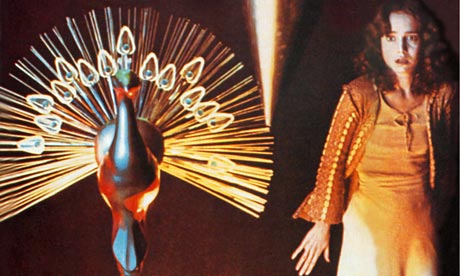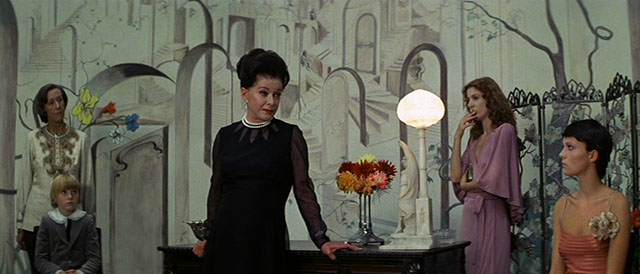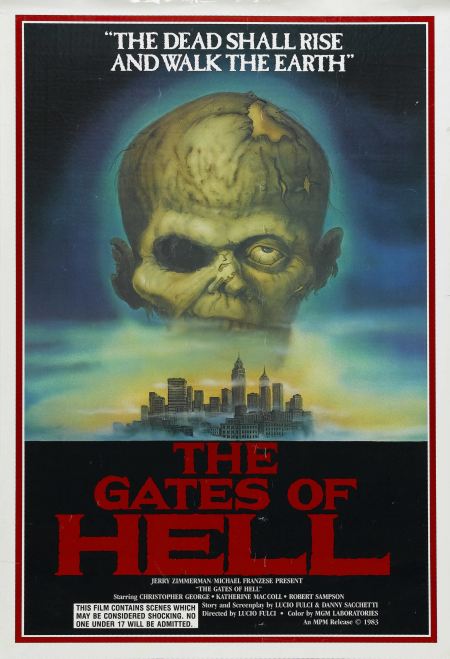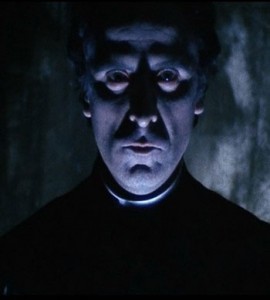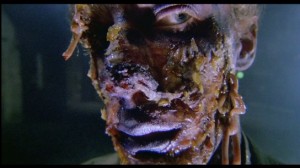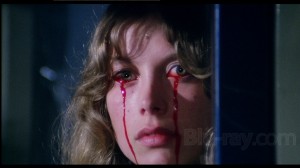 SUSPIRIA (1977); Dir: Dario Argento; Starring Jessica Harper, Stefania Casini, Joan Bennett; Sat. Nov. 10 9:30 p.m.; Plaza Theatre; Presented by Splatter Cinema for the Buried Alive Film Fest; trailer here.
SUSPIRIA (1977); Dir: Dario Argento; Starring Jessica Harper, Stefania Casini, Joan Bennett; Sat. Nov. 10 9:30 p.m.; Plaza Theatre; Presented by Splatter Cinema for the Buried Alive Film Fest; trailer here.
By Andrew Kemp
Contributing Writer
The fine folks over at Splatter Cinema are offering gorehounds and the gore-curious a chance to see SUSPIRIA on the screen this coming weekend as the grand finale of the Buried Alive Film Fest (Read our full festival preview here). They’re advertising this screening as a “Special Restored Edition” which suggests that this beautiful film will be presented without all the marks, scratches and chemical bleeds that might get in the way of the full SUSPIRIA experience. If you’re going, be sure to arrive on time, as SUSPIRIA also sports one of the best taglines in movie history: “The only thing more terrifying than the last 12 minutes are the first 92.”
For hardcore horror fans, SUSPIRIA hardly needs an introduction. For many, just the first few notes of the main musical theme are enough to send them into vivid memories of their favorite scene, the most gruesome death, or the way they felt when they finally saw that famous last reel. “Cult” is a term that gets thrown around too easily with genre flicks, but SUSPIRIA is one of those movies that earns the title. There’s a church of the converted for this film. Critics overwhelmingly support the movie, and some (such as The Village Voice) even say it’s one of the greatest movies of the entire 20th century. That’s quite a lofty position for a film that’s more about mood than plot, lives on extraordinary violence and willingly, gleefully makes little sense.
What story there is revolves around Suzy (Jessica Harper), an American ballet student who arrives in Germany to attend a prestigious dance academy, only to gradually discover that the school is infested with a coven of witches. And while “a school full of witches” might invoke pleasant thoughts of Potions Class and mail-by-owl, Hogwarts this ain’t. These witches, led by headmistress Madame Blanc (Joan Bennett, DARK SHADOWS), conjure dark forces and engage in sadistic rituals, pursuing bloody, prolonged murder for anyone who gets in the way of their sinister, yet oddly vague schemes.
SUSPIRIA (the title translates loosely into “Sigh”) is one of the best-known titles from Italian horror maestro Dario Argento and helped to cap the short, intense heyday of the Italian giallo picture. The history of Italian cinema is built around trends, with hordes of opportunistic producers chasing any large success by flooding the cinemas with lookalike content. Just as the smash hits A FISTFUL OF DOLLARS (1964) and DJANGO (1966) launched a tidal wave of violent, sweaty (spaghetti) Italian westerns in the 1960s, the 1970s belonged to the Italian thrillers and early slasher films. Originally spinning off from the works of Alfred Hitchcock—the movie usually considered the first giallo, Mario Bava’s THE GIRL WHO KNEW TOO MUCH (1963), was an obvious and unlicensed Hitchcock homage—the giallo genre increased the intensity and cheapness of the thrills, placing their usually-female protagonists in the path of knife-crazed killers, and combining the elements of a whodunit mystery with murder scenes extended beyond belief and buckets upon buckets of blood. Argento made his international name in the genre, and the artistic ambition and style of his films, such as THE BIRD WITH THE CRYSTAL PLUMAGE (1970), inspired a rash of imitators and launched giallo’s peak in the early 1970s, when it extended into all areas of Italian culture, from film to music and literature. In fact, the term giallo itself means “yellow” and refers to the cheap, yellow covers of the typical Italian pulp slasher novel.
By the time Argento made SUSPIRIA, the giallo picture’s moment was nearly over, and the genre had drifted into some very weird territory by embracing the supernatural. Giallo had always favored style over story. Directors like Argento and Bava realized that the plots of their films were usually too silly or too convoluted to hold an audience, and so they treated the films as exercises in image and technique. For SUSPIRIA, Argento took this philosophy to its logical end, drenching the movie in vivid, saturated colors and horrific, grotesque gore. These elements, combined with the odd twists and turns of its story, give SUSPIRIA a dreamlike quality, like a nightmare you’re only half-aware isn’t real. These elements steer SUSPIRIA away from its exploitation roots and into a cinema of the surreal, a deeply affecting and harrowing journey through a landscape that should make sense, but doesn’t.
Backing up this feeling is the film’s famous score, created by the prog rock group Goblin. The infectious, haunting music is as inseparable from the mood and effect of SUSPIRIA as “Tubular Bells” is from THE EXORCIST (1973) or John Carpenter’s main theme from HALLOWEEN (1978), itself heavily inspired by Argento’s work.
SUSPIRIA is an entertaining film, but it’s also an experiment into the effects of extreme cinema on something as primal as the horror movie. Unlike the blunt, mostly artless slasher films it inspired in the states, SUSPIRIA remains one of the prime examples—perhaps THE prime example—of the horror movie as art. There’s been talk of a Hollywood remake for the last several years, but it seems to stall at least in part because the act of remaking a film is largely about the story and the premise, and what makes SUSPIRIA so noteworthy is everything else.
Andrew Kemp is a screenwriter and game writer who started talking about movies in 1984 and got stuck that way. He writes at www.thehollywoodprojects.com and hosts a bimonthly screening series of classic films at theaters around Atlanta.

